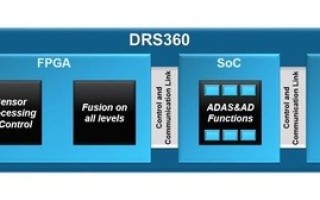Design for Level 5 autonomous driving today
April 04, 2017
Product

In days long past, semiconductor vendors provided semiconductors, and that’s it. Slowly, they moved to other areas that would benefit the design engineer, including drivers, even limited forms of...
In days long past, semiconductor vendors provided semiconductors, and that’s it. Slowly, they moved to other areas that would benefit the design engineer, including drivers, even limited forms of an operating system, Now it’s the norm to produce and offer a development board/kit to accompany your latest IC. The goal is to provide as much as possible for the customer, the design engineer. The easier I make his job, the more likely I am to make the sale.
That’s a mantra that’s work well for the semi guys. So well in fact, that’s its morphing to the other side of the equation. By that, I mean now, the software guys, the operating-system vendors, are offering full-blown hardware to accompany their operating system offerings.
While it’s not a widespread practice yet, as far as I know, it is being done by the folks at Mentor Graphics, as they’re now offering their customers hardware based on the Xilinx Zynq FPGA. Specifically, the offering employs the Xilinx UltraScale+ MPSoC Zynq FPGA. It also contains a series of advanced neural networking algorithms for machine learning and integration services for current and future AI implementation.
Side note: I’m on record as saying that I’m a fan of the Zynq architecture. In addition, our readers have said the same thing, as evidenced by our recent annual Embedded Market Study.
Dubbed the DRS360, Mentor’s offering is aimed at the automotive industry, but not just any facet of the automotive industry. They’ve gone straight to the endpoint and developed a product for SAE Level 5 autonomous vehicles. If you’re not familiar with the various levels of autonomous vehicles, Level 5 is the top tier, meaning full-blown “the car drives itself.” Lots more information is available on this topic in a series authored by the SAE. Bear in mind that the DRS360 can be deployed immediately, even if you’re not ready to tackle Level 5. That allows you to design today for Levels 3 or 4, with the confidence that you’ll be ready to take on Level 5 when you’re ready.
The short story is that Level 0 is a car that drives with no computer-aided assistance; Most of today’s vehicles are at Level 1 or 2 with lane-departure warnings and adaptive cruise control; and a Tesla could probably fit into Level 3 with its Autosteer capability. Level 4? We’re not there yet. But if you want to skip all the easy stuff (yes, that’s a joke) and go right to Level 5, check out this announcement from Mentor Automotive.

The DRS360 can capture and process data from the car’s various sensors, including radar, LIDAR, vision, and others, and react appropriately. According to Mentor, the platform uses “raw data sensors” and takes the data directly into the FPGA, thereby eliminating the pre-processing microcontrollers typically found in sensor nodes. This permits real-time performance while reducing overall system cost and complexity by eliminating a “smart subsystem” at each sensor node. Latency is further reduced by minimizing physical bus structures, hardware interfaces, and complex, time-triggered Ethernet backbones. It also eliminates any potential data loss within those various subsystems.
The DRS360 platform meets all the necessary safety, cost, power, thermal, and emissions requirements as outlined by the ISO 26262 functional safety standard. With all that’s going on, the solution still remains within a 100-W power envelope.
Designers are already working on Level 5 autonomous driving. Now you can get your hardware from your software supplier. What a concept.




